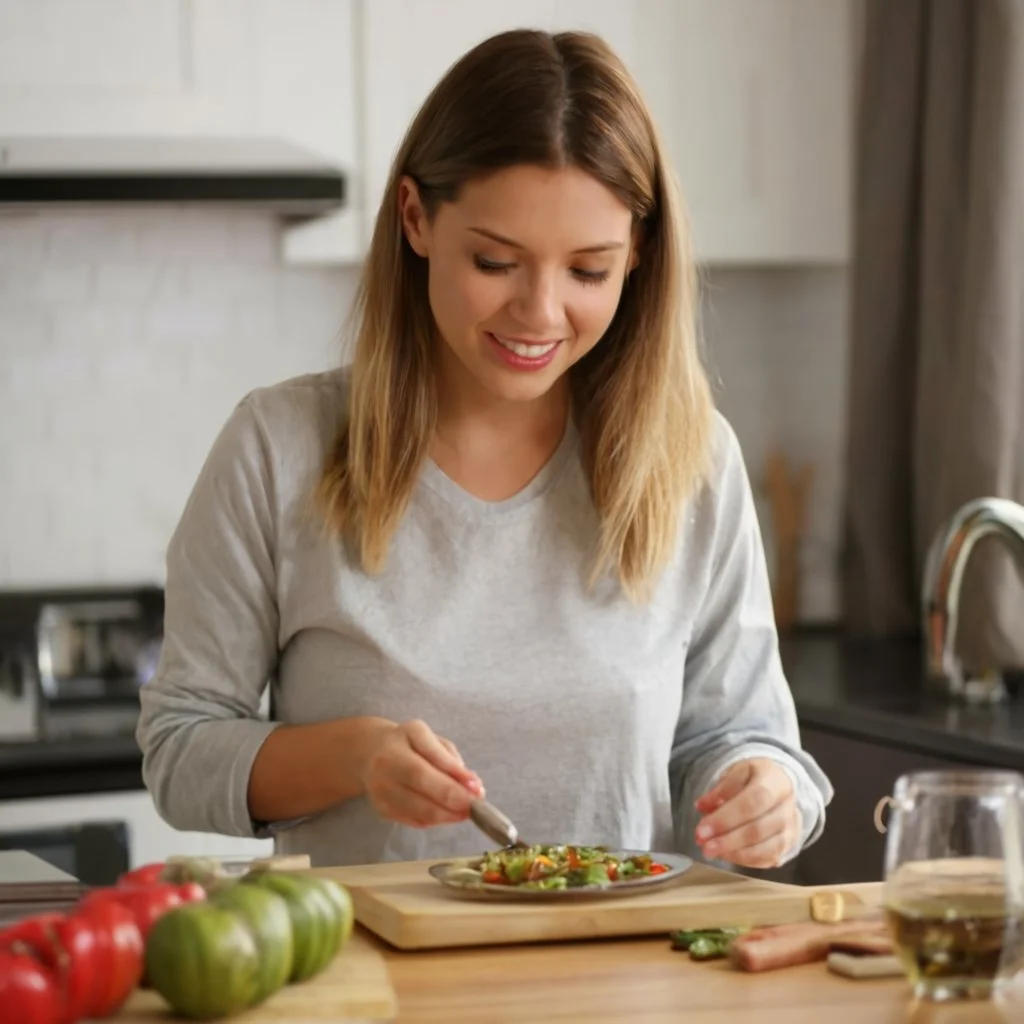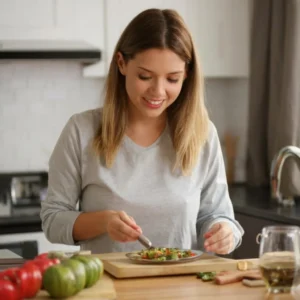Coho salmon recipe, known for its delicate flavor and rich nutritional profile, is a favorite among seafood lovers. Whether you’re a seasoned chef or a home cook looking to impress, this guide will walk you through everything from selecting the best Coho salmon to preparing it with finesse. Let’s dive into the world of Coho salmon recipes, where taste meets health.
Introduction to Coho Salmon
Coho salmon, or Silver salmon, is celebrated for its versatility in dishes and its array of health benefits. Rich in Omega-3 fatty acids, vitamins, and minerals, it’s not just a treat for the palate but also a boon for your health.
Selecting the Best Coho Salmon
Choosing the right Coho salmon is pivotal to the success of your dish. Here are some tips:
- Fresh vs. Frozen: Fresh Coho salmon is often preferred for its texture and flavor, especially if it’s caught and sold within a short timeframe. However, frozen Coho salmon can be a convenient and quality alternative, as freezing technology preserves its freshness and nutritional value.
- Quality Indicators: A high-quality Coho salmon should have bright, clear eyes, indicating freshness. The flesh should be firm to the touch and bounce back when pressed. Also, a fresh, ocean-like smell is a good sign; any strong fishy odor may indicate the fish is past its prime.
For more detailed insights on Coho salmon’s habitat and its importance, consider visiting National Oceanic and Atmospheric Administration.
Preparation Basics for Coho Salmon Recipe
Preparing Coho salmon, a prized catch for its delicate flavor and nutritional benefits, requires attention to detail to preserve its quality from kitchen to table. Whether you’re planning to grill, bake, or pan-sear, mastering the basics of preparation will ensure your salmon is cooked to perfection. Here’s a step-by-step guide to get you started:
1. Thawing (If Using Frozen)
- Gradual Thawing: For frozen Coho salmon, the best practice is to transfer it from the freezer to the refrigerator and let it thaw overnight. This method ensures the salmon retains its texture and flavor.
- Quick Thawing: If you’re short on time, seal the salmon in a plastic bag and submerge it in cold water. Change the water every 30 minutes to continue thawing. Avoid using hot water, as it can start cooking the outer layer of the fish.
2. Cleaning
- Rinsing: Before any cuts are made, rinse the salmon under cold running water to remove any debris or scales. Pat the salmon dry with paper towels to remove excess moisture, which can affect the cooking process.
- Descale (If Necessary): If your Coho salmon still has scales, use the back of a knife to gently scrape against the grain of the scales under running water.
3. Filleting
- Tools Needed: A sharp, flexible fillet knife is crucial for clean cuts. A dull knife can damage the flesh and make filleting more difficult.
- Technique: Place the salmon on a stable cutting board, skin-side down. Starting at the tail end, make a small incision between the flesh and the skin. Hold the tail end of the skin with your other hand or a paper towel for a better grip. Gently slide the knife along the length of the fillet, keeping it angled slightly downwards to stay close to the skin. The goal is to remove the fillet from the skin in one smooth motion without leaving much flesh on the skin.
4. Deboning
- Feeling for Bones: After filleting, run your fingers along the flesh to feel for any pin bones that might be left behind. These are small, flexible bones that can be missed during the initial filleting.
- Removing Bones: Using a pair of tweezers or needle-nose pliers, gently pull out each pin bone at the angle it’s inserted to avoid tearing the flesh.
5. Cutting Portions
- Sizing: Depending on your recipe, you may want to cut the fillet into smaller, individual portions. Use the natural lines of the fish to guide your cuts, aiming for even sizes to ensure uniform cooking.
6. Marinating (Optional)
- Simple Marinades: Coho salmon’s flavor is enhanced by simple marinades. A mixture of olive oil, lemon juice, and herbs (like dill or parsley) can complement its taste. Avoid marinating for too long, especially if using acidic ingredients, as they can begin to “cook” the fish, affecting its texture.
- Marination Time: 15 to 30 minutes is sufficient for Coho salmon to absorb the flavors without the flesh breaking down.
7. Bringing to Room Temperature
- Before Cooking: Let the salmon sit out for about 15 minutes before cooking. Cooking it straight from the fridge can cause the outside to cook too quickly while the inside remains undercooked.
By following these preparation basics, you’ll ensure your Coho salmon retains its moisture, flavor, and nutritional value, setting the stage for a delicious meal. Whether you’re an experienced chef or a novice in the kitchen, these steps will help you handle Coho salmon like a pro, ready for any recipe you choose to explore.
Choose a Coho Salmon Recipe
Now, for the main event: cooking your Coho salmon. Here are some recipes to get you started:
Coho salmon, with its rich flavor and tender texture, is a versatile fish that lends itself to a variety of cooking methods. Below are three delicious Coho Salmon Recipe that highlight the natural goodness of Coho salmon, each offering a different way to enjoy this nutritious seafood.
1. Grilled Coho Salmon Recipe with Lemon Herb Butter
Ingredients:
- 4 Coho salmon fillets, skin on
- Salt and freshly ground black pepper, to taste
- Olive oil, for brushing
- For the Lemon Herb Butter:
- 1/2 cup unsalted butter, softened
- 2 tablespoons fresh lemon juice
- 1 tablespoon finely chopped fresh dill
- 1 tablespoon finely chopped fresh parsley
- Zest of 1 lemon
- Salt and freshly ground black pepper, to taste
Instructions:
- Prepare the Lemon Herb Butter: In a small bowl, mix together the softened butter, lemon juice, dill, parsley, lemon zest, salt, and pepper until well combined. Set aside.
- Preheat the Grill: Preheat your grill to medium-high heat.
- Prepare the Salmon: Brush both sides of the salmon fillets with olive oil and season with salt and pepper.
- Grill the Salmon: Place the salmon, skin-side down, on the grill. Cover and cook for about 6-8 minutes, or until the salmon is nearly cooked through. Flip carefully and grill for an additional 1-2 minutes for a slightly crispy exterior.
- Serve: Remove the salmon from the grill and immediately top each fillet with a generous dollop of the lemon herb butter. Allow the butter to melt over the warm salmon before serving.
2. Baked Coho Salmon with Honey Soy Glaze
Ingredients:
- 4 Coho salmon fillets
- Salt and freshly ground black pepper, to taste
- For the Honey Soy Glaze:
- 1/4 cup honey
- 2 tablespoons soy sauce
- 1 clove garlic, minced
- 1 teaspoon fresh ginger, grated
- 1 tablespoon olive oil
- 1 tablespoon rice vinegar
Instructions:
- Preheat the Oven: Preheat your oven to 400°F (200°C).
- Make the Honey Soy Glaze: In a small bowl, whisk together the honey, soy sauce, garlic, ginger, olive oil, and rice vinegar.
- Prepare the Salmon: Place the salmon fillets on a baking sheet lined with parchment paper. Season with salt and pepper.
- Apply the Glaze: Brush the salmon generously with the honey soy glaze.
- Bake: Bake in the preheated oven for 12-15 minutes, or until the salmon flakes easily with a fork.
- Serve: Drizzle the salmon with any remaining glaze before serving. Garnish with sesame seeds and sliced green onions, if desired.
3. Pan-Seared Coho Salmon with Creamy Dill Sauce
Ingredients:
- 4 Coho salmon fillets, skin on
- Salt and freshly ground black pepper, to taste
- 2 tablespoons olive oil
- For the Creamy Dill Sauce:
- 1 cup heavy cream
- 2 tablespoons fresh dill, chopped
- 1 teaspoon lemon zest
- 1 tablespoon lemon juice
- Salt and freshly ground black pepper, to taste
Instructions:
- Prepare the Salmon: Season the salmon fillets with salt and pepper.
- Pan-Sear the Salmon: Heat the olive oil in a large skillet over medium-high heat. Add the salmon, skin-side down, and sear for 4-5 minutes until the skin is crispy. Flip the salmon and cook for another 3-4 minutes, or until desired doneness.
- Make the Creamy Dill Sauce: While the salmon is cooking, heat the heavy cream in a small saucepan over medium heat. Add the dill, lemon zest, and lemon juice. Season with salt and pepper. Simmer for a few minutes until the sauce thickens slightly.
- Serve: Place the salmon on plates and spoon the creamy dill sauce over the top. Serve immediately.
Each of these recipes showcases the versatility and deliciousness of Coho salmon, making it easy to enjoy a gourmet meal at home. Whether grilled, baked, or pan-seared, Coho salmon is sure to delight your taste buds.
For those interested in pairing their salmon with the perfect wine, Food & Wine offers a plethora of options that complement the rich flavors of Coho salmon.
Sides to Complement Coho Salmon Recipe
Coho salmon, with its rich, delicate flavor, pairs beautifully with a wide range of side dishes. The right sides can enhance the salmon’s taste and create a balanced, nutritious meal. Here are some versatile side options that complement the flavors of Coho salmon, whether it’s grilled, baked, or pan-seared.
1. Roasted Asparagus
Ingredients:
- 1 lb asparagus, ends trimmed
- 2 tablespoons olive oil
- Salt and freshly ground black pepper, to taste
- Lemon wedges, for serving
Instructions:
- Preheat your oven to 400°F (200°C).
- Place the asparagus on a baking sheet in a single layer. Drizzle with olive oil and season with salt and pepper. Toss to coat evenly.
- Roast in the preheated oven for 15-20 minutes, or until tender and lightly caramelized.
- Serve with lemon wedges on the side.
The freshness of roasted asparagus, with its slight crunch and earthy flavor, pairs perfectly with the richness of Coho salmon, offering a light, healthy side that complements the main dish without overpowering it.
2. Quinoa Salad with Lemon Vinaigrette
Ingredients:
- 1 cup quinoa, rinsed
- 2 cups water
- 1 cucumber, diced
- 1 red bell pepper, diced
- 1/4 cup red onion, finely chopped
- 1/4 cup fresh parsley, chopped
- For the Lemon Vinaigrette:
- 1/4 cup olive oil
- 2 tablespoons lemon juice
- 1 teaspoon honey
- Salt and freshly ground black pepper, to taste
Instructions:
- In a medium saucepan, bring the quinoa and water to a boil. Reduce heat to low, cover, and simmer for 15 minutes, or until water is absorbed. Let cool.
- In a large bowl, combine the cooled quinoa, cucumber, bell pepper, red onion, and parsley.
- Whisk together the olive oil, lemon juice, honey, salt, and pepper to make the vinaigrette. Pour over the quinoa salad and toss to combine.
- Chill in the refrigerator for at least 30 minutes before serving.
This quinoa salad brings a refreshing, citrusy brightness that enhances the salmon’s flavor. The combination of textures and the health benefits of quinoa make it an ideal side for a well-rounded meal.
3. Garlic Mashed Potatoes
Ingredients:
- 2 lbs potatoes, peeled and quartered
- 4 cloves garlic, minced
- 1/2 cup milk
- 1/4 cup unsalted butter
- Salt and freshly ground black pepper, to taste
Instructions:
- Place the potatoes in a large pot and cover with cold water. Bring to a boil over high heat, then reduce to a simmer and cook until potatoes are tender, about 20 minutes.
- In a small saucepan, heat the milk and butter over low heat until the butter is melted. Add the minced garlic and let infuse for a minute.
- Drain the potatoes and return them to the pot. Mash the potatoes, gradually adding the garlic-infused milk and butter until smooth and creamy. Season with salt and pepper to taste.
- Serve warm.
Garlic mashed potatoes offer a comforting, creamy texture and a gentle garlic flavor that pairs wonderfully with Coho salmon, providing a satisfying counterbalance to the lightness of the fish.
4. Citrusy Kale Salad
Ingredients:
- 1 bunch kale, stems removed and leaves torn
- 1 orange, segmented
- 1/4 cup slivered almonds
- 1/4 cup dried cranberries
- For the Dressing:
- 3 tablespoons olive oil
- 1 tablespoon orange juice
- 1 tablespoon lemon juice
- 1 teaspoon honey
- Salt and freshly ground black pepper, to taste
Instructions:
- In a large bowl, massage the kale with a little olive oil until the leaves start to soften.
- Add the orange segments, almonds, and dried cranberries to the kale.
- Whisk together the olive oil, orange juice, lemon juice, honey, salt, and pepper to make the dressing. Drizzle over the salad and toss to combine.
- Serve immediately or let sit for about 10 minutes to allow the flavors to meld.
The bright, fresh flavors of a citrusy kale salad offer a crisp and nutritious complement to Coho salmon, with the added textures of nuts and cranberries providing a delightful contrast.
Each of these side dishes not only complements the flavors of Coho salmon but also adds color, texture, and nutritional value to your meal, making for a well-rounded and delicious dining experience.
Expand your culinary horizons by pairing your coho salmon with an appetizer that’s a bit off the beaten path. Discover the unique taste of Salvadoran Quesadilla, a delightful prelude to the main dish that’s sure to impress your guests.
FAQs for Coho Salmon Recipe
What is the best season for Coho Salmon?
The best season for Coho salmon, also known as Silver salmon, varies depending on the region but generally falls between late summer and early fall. In the Pacific Northwest, for example, Coho salmon season peaks from August through October. This timing aligns with their migration patterns, as Coho salmon return to freshwater rivers from the ocean to spawn, making them more abundant and accessible for fishing.
During this peak season, Coho salmon are at their freshest, offering the highest quality in terms of flavor and texture. Freshly caught Coho salmon during these months is ideal for a variety of culinary applications, from grilling and baking to smoking and curing. For those looking to purchase Coho salmon outside of its peak season, frozen options are available year-round and can provide a convenient and quality alternative.
Can Coho Salmon be cooked from frozen?
Yes, Coho salmon can be cooked from frozen, making it a convenient option for quick and healthy meals. Cooking salmon from frozen can help preserve its moisture, ensuring the fish remains tender and flavorful. However, there are a few considerations to keep in mind to achieve the best results:
- Adjust Cooking Time: Cooking Coho salmon from frozen will require additional cooking time compared to fresh or thawed fish. Expect to increase the cooking time by approximately 50% when starting with frozen salmon.
- Direct Heat Methods: Techniques such as grilling, broiling, or pan-searing are effective for cooking frozen salmon. These methods allow the exterior to develop a nice color and texture while the interior cooks through.
- Oven Baking: Baking frozen Coho salmon in the oven is another straightforward method. Preheat your oven to around 425°F (220°C), place the frozen salmon on a lightly oiled baking sheet, season as desired, and bake until the salmon is cooked through and flakes easily with a fork.
- Avoid Certain Cooking Methods: It’s generally not recommended to deep-fry frozen salmon due to safety concerns with moisture causing hot oil to splatter. Similarly, slow-cooking methods might not evenly cook the salmon through.
- Season Well: Since frozen salmon might release more water as it cooks, consider seasoning it well or using flavorful marinades, glazes, or sauces to enhance its taste.
Cooking Coho salmon from frozen is not only convenient but also a great way to enjoy this nutritious fish year-round. With the right cooking method and a bit of extra time, you can turn a frozen fillet into a delicious, healthy meal.
Conclusion
Remember, the key to a great Coho salmon dish lies not just in the recipe but in the love and care you put into preparing it. With these tips and recipes, you’re well on your way to creating a meal that’s sure to impress.
For tracking the nutritional benefits of your meal, including Coho salmon, MyFitnessPal is an excellent resource.
After enjoying a savory coho salmon main course, why not treat yourself to a sweet finish? Our Perfect Strawberry Cream Cheese Frosting can top off any dessert, making it the ideal follow-up to a seafood feast.


